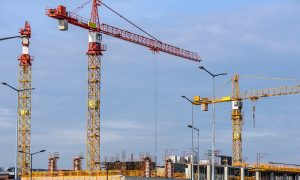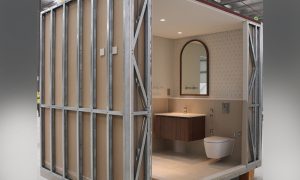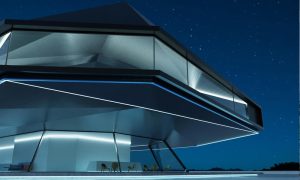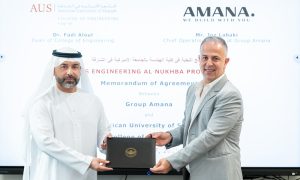Bentley Systems’ Santanu Das on the connected future
The Senior Vice President of Design Modeling discusses how technology is changing the way professionals around the world create and collaborate
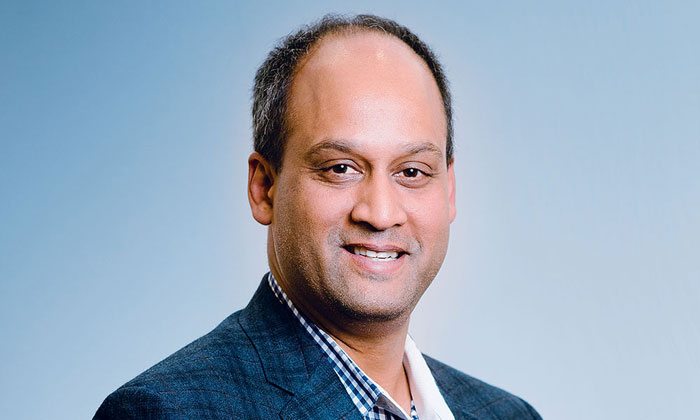
Q. What is Bentley Systems about, and what is your focus within the organisation?
A. Bentley Systems is now a 33-year-old company, and our core focus is software development. We develop solutions that support the professional needs that arise from people who are involved in creating infrastructure, whether it’s skyscrapers, roadways, railways, power plants or utility networks. My portfolio of products is called Desktop Application Solutions, so they include BIM (Building Information Modelling) for plant, for normal buildings, for civil transportation, for electrical and structural solutions. I run the MicroStation business too, which is still Bentley’s biggest business, it’s where we started everything from, and what most of our products are based on.
Q. You’re usually based in the United States. What’s the focus of your trip to the Middle East?
A. I like to look at my high-growth areas, where I believe our market will be healthy in the next year to three years. I’m not a big five-year planner, I like to plan short and be nimble, and I believe the Middle East, Southeast Asia, India and China are poised for rapid growth. I’m also keen to get up close with engineers from this region – if you put the Middle East and India together, you produce about 350,000 graduate engineers every year. That’s about six times more than the United States produces, and these are the young leaders of tomorrow, they are going to decide what tools we use, what processes we use and how we work together. As workforces and projects get more global, it’s important we better understand how global work-sharing works, because our tool needs to be the lifeline between our customers’ facilities as well.
Q. The construction industry is evolving. What’s got the industry’s interest at the moment?
A. The biggest trend right now is cloud. Everybody is talking about the cloud and mobile devices, and people want to be able to work, because what’s happening today is that a lot of the software is getting more complex. Engineers are no longer coming up with one or two versions of a model – they want a thousand versions so they can see what looks best, what can help them save time or money, etc. The problem is to go through all those iterations requires a lot of man hours and a lot of computing time. With cloud solutions you have unlimited power, so we now go to the engineers and say, ‘You no longer have that limitation, go ahead and run a thousand operations, come back in the morning and I’ll tell you which one is the optimal one for you to use.’ The industry went from 2D CAD to BIM, and now it’s going from BIM to cloud-based processes, and Bentley’s connecting the process.
Q. Bentley Systems specialises in 3D reality modeling. Talk to us about that.
A. Before we had drones, we had LIDAR laser scanning. These machines shot out lasers, the lasers would bounce off the object and come back to the source, which allowed us to create a point cloud which resembled the object. The LIDAR model could then be imported into software, which enabled us to detect walls, floors, a room, etc. It allowed you to establish a reference point for your model, but the challenge is that point clouds are expensive to produce, and more so if you’re using them to monitor the progress of construction. The other limitation is that it would take a while for a LIDAR to get to a remote location. Now we rely on drones – they’re sent out on a flight path, they take thousands of images in a matter of minutes, and we can then take these pictures and stitch them into a 3D reality model using our ContextCapture solution. You can then navigate through this 3D model, you can measure it, mesh it and add extensions to it instantly. This solution can help construction companies make sure that whatever it is they are building is exactly what they designed. That’s very important because if there’s a mistake on the construction site, you typically don’t find out about it until it’s too late. With this solution, however, you can inexpensively and quickly get a fresh 3D model update every day to check against your design plans.
Q. What are the challenges you see to the adoption of BIM software?
A. Everyone has been doing engineering design for so long using existing tools and processes that we might have to wait for people to retire, so the new guys can take advantage of the modern solutions and processes. It’s a massive change in process, and as the newer guys take more leadership roles, they’re going to look for these efficiencies. New guys don’t want to take a job that requires writing on paper or working in 2D, they want to advance their field. They don’t want to do a half-a-kilometre-tall building, they want to do a three-kilometre-tall building. If the world wants to advance its infrastructure with water treatment plants that can handle tens of millions of people, road infrastructure that’s designed for driverless cars – these are all things that will require the use of new tools and solutions.
Q. What’s your vision for Bentley Systems’ BIM software?
A. We want to get all our users connected – we want to get their projects connected, their workflows connected, their data connected – and the cloud is going to be the backbone of that. We honestly believe that is the vision that we want to get to. It’s absolutely doable, and one of the benefits is that BIM software is creating a massive data repository. Clients don’t know how to mine this data, but we do, and we’re going back to them with useful information. We can go back to clients and say, ‘Sir, your last ten projects took you 77 hours, we think it should take you 45 hours because that’s the average industry standard.’ We can help our users improve their workflow purely by digesting their data. We call it our Connected Project Analysis.
